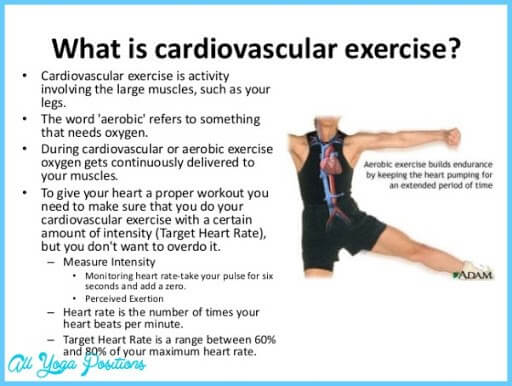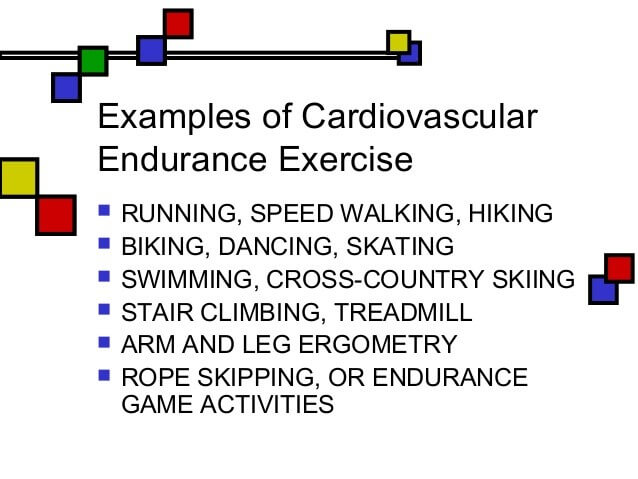Cardiovascular Endurance - Aerobic Exercise
To perform physical activities in a competitive environment, a lot depends on the supply of blood to the involved muscles. Cardio Vascular endurance defines the efficiency of blood supply to the muscles which would be used for activities like running, jumping or stretching.
With oxygen and without oxygen metabolisms
The human body executes a process of converting the food eaten to fuel. The converted output is used for performing tasks. There are two different categories of metabolism that the human body experiences.
- Without oxygen metabolism (Aerobic Metabolism)
- With oxygen metabolism (Anaerobic Metabolism)
Energy systems involved
The energy supplied to the body is classified into three systems. Depending on the nature and requirement of the task, one of them is selected. All these systems produce varying results depending on the maximum heart rate of a person.
1. Anaerobic Energy Pathway
Some activities require a quick energy burst for a small span. A professional runner competing in a 100-meter race is an example. With this system, the supply of energy is short and the maximum duration is 9 to 10 seconds.
2. Energy cycle for Aerobic Metabolism
This energy system is related to high pressure tasks that can stretch between 5 to 10 minutes. Weight lifters take part in competitions during which they are required to lift heavy chunks of metal. This requires a short but fast energy supply due to which the aerobic metabolism energy system is activated.
3. Energy cycle for Anaerobic Metabolism
The Anaerobic metabolism energy system is meant for longer tasks that require gradual supply of energy. Skipping a rope or spot jogging are some of the many activities that use this system.

Tests to check Cardiovascular Endurance
There are different recommended tests to check the level of endurance
1. The 12-minute test
This is one of the commonly conducted tests to gauge the abilities of professional athletes. An individual is tasked to cover the maximum possible distance in a duration of 12 minutes. This can be achieved through walking, brisk walking, jogging, or running. At the conclusion of the 12-minute period, the covered distance will be calculated. The level of endurance is directly proportional to the distance traveled.
Please note, if you have any cardiovascular issues, it is strongly advised to speak to a Cardiologist before attempting this test.
There are established standards to measure your progress. For example, if a male between the ages of 20 and 29 fails to complete 1600 meters, his performance would be rated as poor. Conversely, if he is successful in covering 2700 meters or more, he will fall into the “Excellent” category. Your age and the distance covered will decide the category you fall in.
- This test is conducted on a running track. After every 20 or 30 meters, a cone is kept which makes it quite simple to calculate the covered distance.
- The runner should not start running immediately. A warmup of 8 to 10 minutes is needed to attain the required muscular flexibility. This practice helps in avoiding injuries related to the groin, thighs and knees.
- Some important equipment is required to conduct the test. You need to have a stop watch, cones (to mark distance limits) and appropriate attire (shoes and jogging suit)
2. The VO2 max test
This is a more quantitative test to check the fitness of an athlete. A very specific environment is needed so it is conducted in professional sports labs only instead of open environments.
- The main requirement of this text is a treadmill or exercising bicycle. Either of them has a sports pump attached. The goal is to check the oxygen utilization ability which an athlete has. The more time spent on running / walking while sucking oxygen will determine the endurance level.
- A light apparel preferably a pair of shorts and a loose t-shirt will be suitable. There are pre-defined standards to check the progress delivered by an individual. A male who is 35 years and gets a score of 30 falls in the “poor category”. On the other hand, a women of the same age would have to get a minimum count of 23.
- A lot depends on the age and gender. A man and woman of the same age would not have the same minimum limits. Likewise, two people of the same gender but different ages will be excepted to achieve different goals.

Methods to improve cardiovascular endurance
Athletes can follow the following tips and improve their levels easily.
1. Take minimum gaps between workout sets
It is impossible to improve endurance without working out as high pressure physical activities stretch you to the limit. It is important to reduce the time span between two successive sets of an exercise. The increase in break spans also causes a rise in the energy needed to resume workouts. This reduces the intensity of durability.
2. Lift weights at a fast pace
Performing weight training at a fast face actually helps a lot. To start with, it improves the level of strength. If you are able to lift 10 kilos four times in ten seconds, this ability would increase due to enhanced physical power.
Related Calculator: 1rm Calculator
3. Do not have an unchanged workout schedule
There is no doubt that the human body gets used to a schedule of workout sessions after 15 to 17 days. This is when you have to up the level to make things challenging. In case of weight lifting, increase the time span for per day sessions or the mass limit. Altering the exercising routine causes a noticeable rise in the level of endurance. This leads to bettered standards of muscular fitness.
References:
http://allyogapositions.com/developing-a-cardiorespiratory-endurance-exercises-program.html
https://ww1.speechfoodie.com/cardiovascular-fitness-exercises-examples/